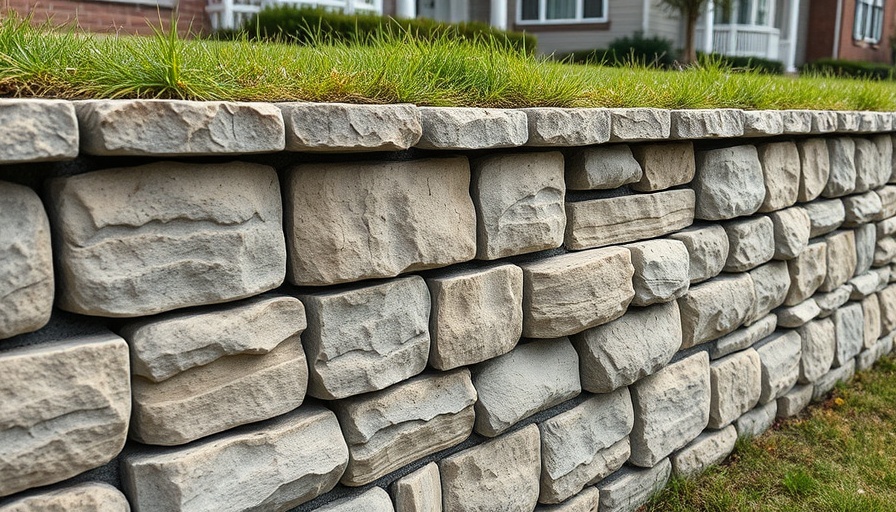
The Importance of Retaining Walls in Home Design
As homes continue to be built on sloped or irregular terrains, retaining walls have become an essential part of landscape design. These structures not only serve to hold soil but also play a crucial role in preventing erosion and creating usable space in gardens and yards. They can be made from various materials, such as concrete, stone, or timber, making them versatile in both function and style. By being knowledgeable about your retaining wall's needs, you can enhance its longevity and safeguard your property.
Understanding Why Retaining Walls Fail
The primary culprit for retaining wall failure is improper drainage. When water accumulates behind the wall, it creates immense pressure that can force the structure outward. Many homeowners overlook this critical aspect during construction, often leading to costly repairs down the line. Other factors that may contribute to wall collapse include excessive weight from vehicles or structures placed too close to the wall and the effects of freezing temperatures.
Preventative Measures to Keep Your Retaining Wall Strong
Homeowners can take several practical steps to ensure the stability of their retaining walls. Firstly, establishing a robust drainage system is essential. This can include installing weep holes or using gravel backfill to facilitate water escape. It’s important to use appropriate materials that suit your soil condition to avoid future complications. Regular maintenance checks can help identify early signs of wear, such as cracks or leaning, allowing you to act before a small repair turns into a hefty reconstruction.
Professional Help: When to Call an Expert
While DIY repairs may seem appealing, some situations warrant professional intervention. Bringing a structural engineer into the conversation can provide insights into load requirements and design adjustments needed for your specific location. If your wall shows signs of instability, don’t hesitate—addressing these concerns early can save you a significant amount in future repairs.
Cost Factors and Repair Options
The costs associated with repairing a retaining wall can vary widely. Basic repairs may only set you back a few hundred dollars, but significant collapses could involve thousands. If your wall is showing signs of major distress, you might even be looking at a complete rebuild—a much more expensive undertaking. It's always best to evaluate the issue early, maintain regular checks, and seek professionals when necessary.
Emotional and Practical Benefits of a Strong Retaining Wall
A strong retaining wall does more than just prevent soil movement; it contributes to the overall aesthetic and safety of your property. Knowing that your home is protected from erosion-related damage helps to provide peace of mind, allowing you to enjoy your outdoor spaces. Additionally, a well-maintained wall can enhance the value of your home should you decide to sell in the future.
Conclusion
Homeowners should take proactive steps to monitor and maintain their retaining walls, ensuring proper drainage and addressing structural concerns early. A strong and reliable retaining wall not only protects your landscape but also adds tangible value to your property. Don’t wait until you have a crisis on your hands; take the time now to ensure your retaining wall is functioning at its best—and consult a professional if you're unsure.
By taking these steps, you can preserve the integrity of your home and enhance your outdoor environment. If you're looking for more practical home improvement tips that can save you money and stress, consider subscribing to our blog or newsletter.
 Add Row
Add Row  Add
Add 




 Add Row
Add Row  Add
Add 

Write A Comment